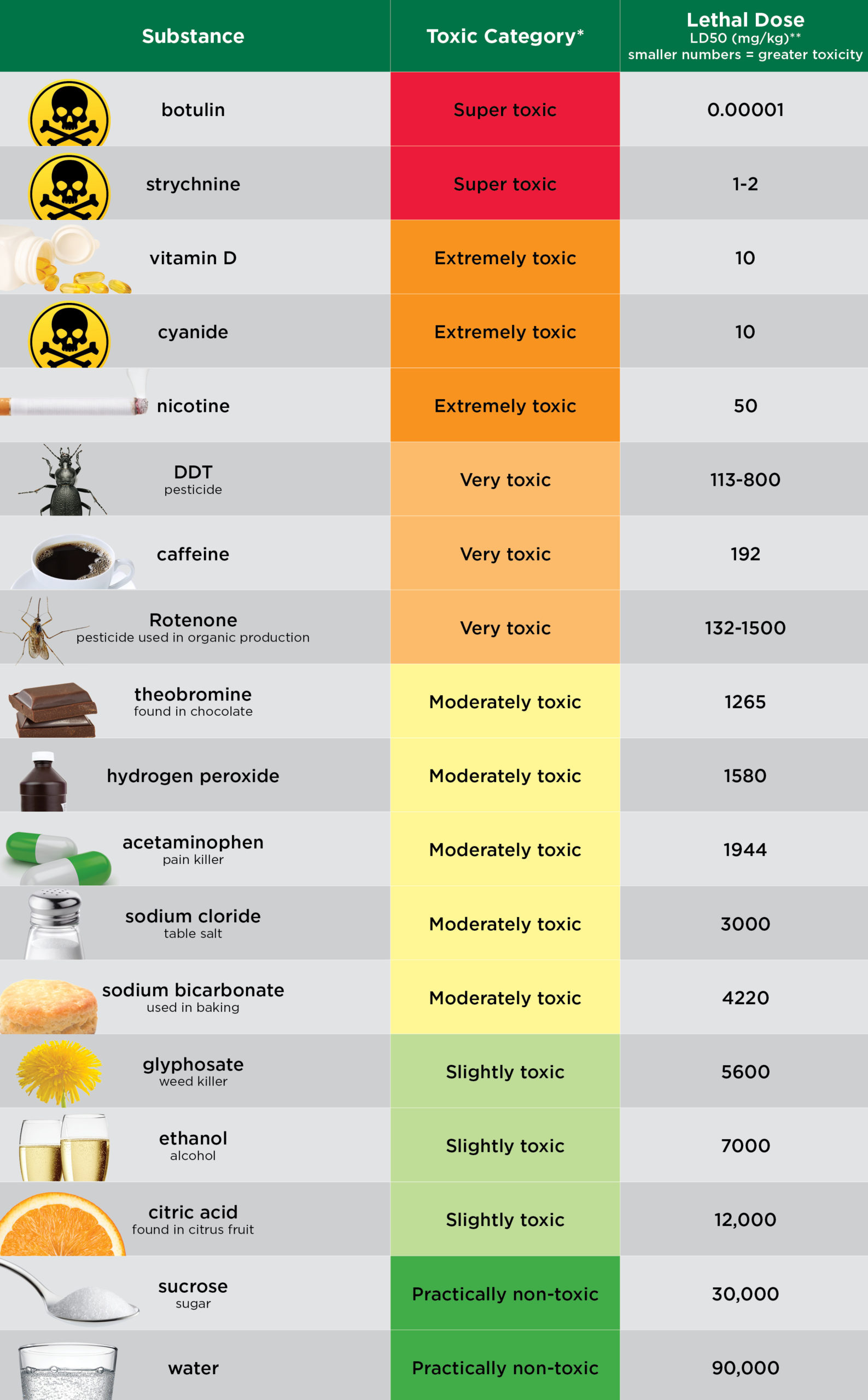The public has a right to chemical and environmental transparency when it comes to food and consumer products. While people should have a right to know, they should also have a right to understand the risks and harm.
Risk and harm are determined by the amount, or dose, of a chemical or substance that comes into contact with a person – not necessarily the toxicity of a substance.
What does it mean to say “The Dose Makes the Poison”?
Detection does not automatically mean harm. For example, a tiny amount of toxic arsenic found in broccoli is far safer than drinking 20 gallons of “safe” water.
The same goes for sodium chloride, glyphosate or theobromine (see common names in chart below). It is important to remember that everyone on the planet is comprised of natural chemicals and compounds. The distinction of dose is critical, otherwise consumers can easily be unnecessarily frightened into worrying about every chemical detected in our food, body or air. California has some of the most stringent laws and regulations in the world. They also recognize detection does not equate to harm.
Below is a chart outlining toxicity rankings on the amount of exposure to a given chemical in one setting:

* Toxicity rankings are based on the EPA’s categorization (I through IV) (Title 40 of the Code of Federal Regulations)




